Home>Articles>If You Must Set Your Ladder In Front Of A Door What Should You Do To Ensure Your Own Safety?


Articles
If You Must Set Your Ladder In Front Of A Door What Should You Do To Ensure Your Own Safety?
Modified: January 8, 2024
Stay safe while using a ladder near a door with these essential tips. Read articles on how to ensure your own safety and prevent accidents.
(Many of the links in this article redirect to a specific reviewed product. Your purchase of these products through affiliate links helps to generate commission for Storables.com, at no extra cost. Learn more)
Introduction
Welcome to our comprehensive guide on how to ensure your own safety when setting a ladder in front of a door. Ladders are essential tools for various tasks, but they can pose serious safety risks if not used properly. Placing a ladder in front of a door presents unique challenges as it can limit access and potentially cause accidents. However, with the right knowledge and precautions, you can safely carry out your work without compromising your well-being or the safety of others.
Understanding the potential hazards and assessing risks is crucial before embarking on any task involving a ladder in front of a door. This article will provide you with step-by-step guidance on how to mitigate these risks and keep yourself safe throughout the process.
Key Takeaways:
- Prioritize safety by assessing risks, communicating effectively, and securing the ladder to ensure a safe working environment when setting it in front of a door.
- Be prepared for emergencies by staying calm, securing the ladder, and following established procedures to mitigate risks and protect everyone involved.
Understanding the Hazard
Placing a ladder in front of a door can create a hazardous situation for several reasons. Firstly, it restricts access to the building, potentially trapping people inside in case of an emergency. Secondly, the door may accidentally open, causing the ladder to collapse or fall. Additionally, there may be obstacles or uneven surfaces that pose a tripping hazard.
Assessing Risks and Potential Dangers
Prior to setting up the ladder, carefully assess the environment for any potential risks. Look for obstructions, such as furniture or objects that could impede your movement or cause the ladder to shift. Check the condition of the door and its hinges to ensure it is stable and won’t unexpectedly swing open. Also, consider the weight-bearing capacity of the floor near the door, as a weak or unstable surface can lead to accidents.
Safety Precautions before Setting the Ladder
Before you even place the ladder in front of the door, take the following safety precautions:
- Clear the area around the door of any obstacles or clutter that could be tripped over.
- Ensure the door is securely closed and won’t swing open unexpectedly.
- Inform others in the building about your work and ask them to refrain from using the door while you are working.
- Wear appropriate personal protective equipment (PPE), such as a hard hat, gloves, and non-slip footwear.
Ensuring Safe Ladder Placement
Proper ladder placement is crucial to ensure stability and prevent accidents. Follow these guidelines for safe ladder setup:
- Choose a ladder that is suitable for the task and meets the required weight capacity.
- Position the ladder at a slight angle, approximately one foot away from the base for every four feet of height.
- Ensure the ladder is on a stable and level surface.
- Lock the ladder’s spreaders or braces to keep it fully open and prevent accidental closure.
- Make sure the ladder is tall enough to safely reach the desired height without standing on the top rungs.
Remember, never place a ladder on a slippery or unstable surface, such as ice, oil, or loose gravel. Take extra care when setting up the ladder on grass or uneven ground, as it may wobble or shift unexpectedly.
Key Takeaways:
- Prioritize safety by assessing risks, communicating effectively, and securing the ladder to ensure a safe working environment when setting it in front of a door.
- Be prepared for emergencies by staying calm, securing the ladder, and following established procedures to mitigate risks and protect everyone involved.
Understanding the Hazard
When it comes to setting a ladder in front of a door, it’s essential to understand the potential hazards and risks involved. By being aware of these dangers, you can take the necessary precautions to ensure your own safety and the safety of others.
One of the primary hazards of placing a ladder in front of a door is the restriction of access to the building. When the ladder obstructs the entrance, it can prevent people from entering or exiting the premises. This can be particularly hazardous in emergency situations, where quick and unimpeded access to the building is crucial.
Another danger to consider is the possibility of the door accidentally opening while the ladder is in place. This can lead to various hazards, such as the ladder collapsing, falling, or shifting unexpectedly. Additionally, an open door can create an imbalance in weight distribution, which can affect the stability of the ladder and increase the risk of accidents.
Uneven surfaces or obstacles in the vicinity of the door can also pose a significant tripping hazard. Before setting up the ladder, carefully inspect the area for any obstructions, such as furniture, equipment, or debris, that may impede your movement or cause the ladder to become unstable.
Furthermore, it’s important to assess the condition of the door and its hinges. Doors that are not properly maintained or have faulty hinges may swing open unexpectedly, posing a threat to the ladder and anyone using it. Prioritizing safety includes ensuring that the door is securely closed and will not open accidentally, compromising the stability of the ladder.
Lastly, keep in mind the weight-bearing capacity of the floor surrounding the door. Depending on the construction of the building, there may be certain areas near the entrance that cannot support the weight of a ladder and a person standing on it. It is crucial to identify these weak spots and avoid placing the ladder in such areas to prevent structural damage or accidents.
By understanding these hazards, you can take the necessary precautions and adopt safe practices to minimize the risks involved when setting a ladder in front of a door. The next section will guide you through the process of assessing risks and potential dangers to ensure a safe working environment.
Assessing Risks and Potential Dangers
Before setting up a ladder in front of a door, it is crucial to systematically assess the environment for potential risks and dangers. By identifying these hazards, you can take appropriate measures to mitigate them and ensure a safer working environment.
Start by carefully surveying the area around the door. Look for any obstructions or objects that may impede your movement or cause the ladder to shift or become unstable. This can include furniture, equipment, loose items, or debris. Clearing the area of these potential obstacles will reduce the risk of tripping or accidents while working with the ladder.
Next, examine the condition of the door and its components. Check for any visible damage, such as loose hinges, cracks, or signs of instability. A faulty door can pose a significant risk, as it may unexpectedly swing open while the ladder is in use. If you notice any issues, consider fixing or replacing the door before proceeding with the ladder setup.
Assess the stability of the floor surrounding the door. Look for signs of weakness or unevenness, such as sagging, cracks, or soft spots. These areas may not be able to support the weight of the ladder and a person standing on it, potentially leading to accidents or structural damage. Avoid placing the ladder in these vulnerable spots and choose a more stable area to ensure your safety.
Consider the weight-bearing capacity of the floor by referring to building codes or consulting with professionals if necessary. Each building has a maximum weight limit that its floors can safely withstand. Exceeding this limit can result in floor failure or collapse, endangering yourself and others in the building. Ensure that the combined weight of the ladder, equipment, and your own weight is within the permissible range.
Take into account any overhead obstacles or low-hanging structures near the door. This can include light fixtures, ventilation ducts, or ceiling fixtures. Ensure there is sufficient overhead clearance to prevent collisions or entanglements while setting up or using the ladder.
Finally, assess the potential risks from the tasks you will perform while using the ladder. Determine if there are any specific dangers associated with the work you will be doing, such as electrical hazards, use of heavy equipment or tools, or working at heights. Take necessary precautions, such as wearing appropriate personal protective equipment (PPE), following safety guidelines, and seeking assistance if needed.
By thoroughly evaluating the risks and potential dangers, you can make informed decisions and implement safety measures to minimize the likelihood of accidents. The next section will discuss the safety precautions to take before setting up the ladder in front of the door.
Safety Precautions before Setting the Ladder
Prior to setting up the ladder in front of a door, it is essential to take specific safety precautions that will help ensure a safe working environment. By following these guidelines, you can minimize the risk of accidents and protect both yourself and others in the vicinity.
The first step is to clear the area around the door of any potential obstacles or clutter that could present a tripping hazard. Remove any furniture, equipment, or debris that may impede your movement or cause you to lose balance while setting up or using the ladder.
Ensure that the door is securely closed before proceeding. A closed door reduces the risk of the ladder being inadvertently bumped or causing the door to swing open unexpectedly. If the door does not have a latch or lock to secure it, consider using a doorstop or a wedge to keep it firmly closed.
Communicate with others in the building about your work. Inform them of your intentions to set up the ladder in front of the door and request their cooperation in refraining from using the door during your work. This helps avoid any potential collisions or accidents caused by someone opening the door while the ladder is in place.
Prioritize your personal safety by wearing appropriate personal protective equipment (PPE). This may include a hard hat to protect your head from falling objects, gloves to enhance grip and protect your hands, and non-slip footwear to prevent slips and falls. Adapt the PPE according to the specific hazards of the task you will be performing while using the ladder.
Ensure that you are physically fit and in a healthy condition before using the ladder. If you are feeling unwell, fatigued, or have any physical limitations that may affect your balance or ability to safely operate the ladder, consider postponing the task or asking for assistance.
Inspect the ladder for any visible defects or damages before use. Check for loose rungs, damaged steps, or bent parts. If you notice any issues, do not use the ladder and either repair it or replace it with a safe and reliable alternative.
Finally, familiarize yourself with the ladder’s operating instructions and safety guidelines provided by the manufacturer. Understanding how to properly set up and use the ladder will significantly reduce the risk of accidents and ensure your safety throughout the task.
By taking these safety precautions before setting up the ladder, you are proactively preventing potential accidents and mitigating hazards. The next section will guide you through the process of ensuring safe ladder placement to maintain stability and prevent accidents.
Ensuring Safe Ladder Placement
Proper ladder placement is essential to maintain stability and prevent accidents when setting a ladder in front of a door. By following these guidelines, you can ensure safe ladder placement and minimize the risk of falls or other mishaps.
Firstly, choose a ladder that is appropriate for the task at hand. Consider the height you need to reach and select a ladder that is tall enough without standing on the top rungs. Make sure the ladder is in good condition and can safely support your weight. Check the weight capacity rating provided by the manufacturer and ensure it can withstand your weight along with any additional equipment or materials you may need to carry.
Position the ladder at a slight angle, commonly known as the “4-to-1 rule.” This means for every four feet of height, move the base of the ladder one foot away from the wall or the door. This angle provides stability and minimizes the risk of the ladder tipping over. Avoid placing the ladder too close or too far away from the door as it can compromise stability and make it more difficult to access the intended area.
Before placing the ladder, ensure that the surface it will rest on is stable, level, and capable of supporting the ladder’s weight. Avoid slippery or uneven surfaces, such as ice, wet areas, or loose gravel, as they can cause the ladder to wobble or shift unexpectedly. If necessary, use appropriate materials, such as mats or boards, to improve stability and prevent slippage.
Once the ladder is in position, lock the spreaders or braces to keep the ladder fully open and prevent accidental closure. This ensures that the ladder remains in a stable position during use. Double-check all locks and mechanisms to ensure they are secure before ascending the ladder.
When climbing the ladder, always maintain three points of contact. This means either having both feet and one hand or both hands and one foot in contact with the ladder at all times. This provides stability and minimizes the risk of losing balance and falling.
Avoid overreaching while on the ladder. Instead, reposition the ladder as necessary to maintain a proper working position. Overreaching can cause the ladder to become unstable and increase the risk of falls or accidents.
If you need to work with tools or equipment while on the ladder, use a tool belt or secure them to your person. This allows you to keep both hands on the ladder while working, reducing the risk of losing balance or dropping items.
Finally, never place the ladder on top of other objects, such as boxes or scaffolding, to gain additional height. This can compromise stability and create an unsafe working environment. Instead, use an appropriately sized ladder that can reach the required height safely.
By following these guidelines for safe ladder placement, you can ensure stability and minimize the risk of accidents when using a ladder in front of a door. The next section will provide additional tips for securing the ladder and maintaining safety throughout the task.
Read more: How Often Should You Inspect A Ladder
Tips for Securing the Ladder
Securing the ladder properly is crucial to maintain stability and prevent accidents while working in front of a door. By following these tips, you can ensure that the ladder remains secure throughout the task, minimizing the risk of falls or other mishaps:
1. Use ladder stabilizers or adjustable leg levelers: These accessories can provide additional stability on uneven surfaces. Stabilizers attach to the sides of the ladder, while leg levelers can be adjusted to compensate for uneven ground, ensuring a level and secure platform.
2. Secure the ladder at the top: If there is a handle or railing at the top of the door or nearby wall, use straps or ties to secure the ladder to it. This will prevent the ladder from shifting or sliding sideways while you are working and provide an extra level of stability.
3. Utilize ladder harnesses or bungee cords: For added security, consider using a ladder harness or bungee cords to anchor the ladder to a stable object. Attach one end to the ladder and the other to a secure point, such as a railing or heavy object, to prevent the ladder from tipping or being knocked over.
4. Place non-slip material under the ladder feet: To prevent the ladder from slipping during use, place non-slip material, such as rubber mats, under the feet. This provides additional grip and stability, especially on slick or smooth surfaces.
5. Avoid leaning the ladder against the door: Placing the ladder directly against the door can create instability and increase the risk of accidents. Instead, position the ladder beside the door, ensuring that it is securely placed on a stable surface.
6. Do not exceed the ladder’s weight capacity: Each ladder has a specified weight capacity, and exceeding it can compromise stability and lead to accidents. Take into account not only your weight but also any tools, equipment, or materials you will be carrying while on the ladder. Choose a ladder with a weight capacity that accommodates these factors.
7. Inspect the ladder regularly: Before and after each use, inspect the ladder for any signs of damage or wear. Check for loose or missing parts, cracks, or bent rungs. Repair or replace any faulty components to ensure the ladder remains safe and sturdy.
8. Avoid sudden movements or jerks while on the ladder: Maintain a steady and controlled movement while ascending, descending, or working on the ladder. Sudden movements or jerks can destabilize the ladder and increase the risk of accidents.
9. Re-position the ladder when necessary: If the ladder needs to be repositioned during the task, ensure its stability and security at the new location before continuing work. Take the time to adjust and secure it properly to maintain safety throughout the project.
10. Never leave the ladder unattended: Whenever possible, avoid leaving the ladder unattended, especially in public areas or where it could pose a risk to others. If you need to step away, ask someone to assist in watching over the ladder or consider temporarily removing it to prevent unauthorized use.
Following these tips for securing the ladder will enhance safety and minimize the risk of accidents or falls while working in front of a door. Remember, always prioritize your safety and take the necessary precautions to ensure a secure and stable working environment.
Precautions to Avoid Accidents with the Door
When setting a ladder in front of a door, it is important to take precautions to prevent accidents and ensure the safety of both yourself and others using the door. By following these guidelines, you can minimize the risk of mishaps and maintain a safe working environment:
1. Keep the door closed and locked: Before setting up the ladder, ensure that the door is securely closed and locked. This prevents the door from accidentally swinging open and potentially causing the ladder to collapse or fall. It also helps maintain the stability of the ladder throughout your work.
2. Use door stoppers or wedges: To provide an additional layer of safety, consider using door stoppers or wedges to keep the door firmly in place. These devices can help prevent the door from opening unintentionally, reducing the chances of the ladder being affected or causing instability.
3. Install warning signs or barricades: If the door is in a public or high-traffic area, it may be beneficial to install warning signs or temporary barricades near the door. This alerts people to the presence of the ladder and reminds them to exercise caution and avoid using the door while you are working.
4. Communicate with others in the building: Inform the people in the building, such as colleagues or residents, about your work and the presence of the ladder in front of the door. Request their cooperation in avoiding the door during your work and ask them to take alternative routes if possible. Clear communication ensures everyone is aware of the potential hazards and helps prevent accidents caused by the door being opened unexpectedly.
5. Secure or remove any door-opening devices: Disable or secure any automatic door-opening devices, such as motion sensors or proximity sensors, that may inadvertently activate the door. This reduces the risk of the ladder being affected or causing instability due to a door opening unexpectedly.
6. Assign a designated lookout: If possible, have a designated person nearby to act as a lookout and monitor the door. This person can alert you if someone approaches or attempts to open the door, allowing you to take immediate action to ensure both your safety and theirs.
7. Be mindful of swing clear hinges: Swing clear hinges are designed to allow a door to open fully and provide maximum clearance. If the door has swing clear hinges, be aware that the door may swing open wider than expected, potentially interfering with the ladder. Take extra caution and position the ladder accordingly to avoid any accidents.
8. Minimize distractions: Avoid distractions while working on the ladder near the door. Remain focused on the task at hand and be aware of your surroundings. Distractions can compromise your balance and increase the risk of accidents or falls.
9. Follow proper ladder safety guidelines: Adhere to general ladder safety guidelines, including maintaining three points of contact, not overreaching, and ensuring the ladder is set up and secured correctly. These practices will help prevent accidents that may be exacerbated by the proximity to the door.
10. Conduct regular safety checks: Periodically inspect the area around the door, the door itself, and the ladder for any potential hazards or issues. Regular safety checks will allow you to identify and address any concerns promptly, reducing the risk of accidents.
By implementing these precautions to avoid accidents with the door, you can create a safer working environment while setting a ladder in front of it. Prioritize safety at all times and remain vigilant to prevent any potential mishaps.
Potential Hazards from People Inside the Building
When setting a ladder in front of a door, it is important to be aware of potential hazards that can arise from people inside the building. While the primary focus is on ensuring your own safety, it is equally important to consider the safety of others who may be using the door or sharing the same space. By understanding these potential hazards, you can take appropriate measures to prevent accidents and maintain a safe working environment for everyone involved.
One of the main hazards is accidental door usage. People inside the building may not be aware that you are working in front of the door and may attempt to open it without realizing the potential dangers. This can result in the ladder being dislodged, causing you to lose balance or fall, or even potentially injuring the person opening the door. It is crucial to communicate with others, as mentioned in the previous section, and inform them of the ladder’s presence to prevent accidental door usage.
Another hazard is distractions caused by people passing through the area. When working on a ladder, distractions can be dangerous, as they can disrupt focus and balance. People passing by or engaging in conversation near the ladder can cause you to lose concentration and may result in accidents. It is essential to create a safe zone around the ladder and kindly request others to respect your work area and refrain from engaging in activities that may distract you.
Improper ladder usage by others can also be a potential hazard. People may attempt to climb the ladder, play on it, or use it for unauthorized purposes. This can lead to damage to the ladder, accidents, or injuries. Clearly communicate to others that the ladder is for specific work purposes only and should not be used without permission or proper training.
Inadequate lighting can also pose a hazard. If the area around the ladder is poorly lit, it can increase the risk of accidents, as it becomes more challenging to navigate the area and maintain balance on the ladder. Ensure that the area has adequate lighting to ensure visibility and minimize the chances of accidents.
Lastly, bystanders or onlookers can pose a potential hazard by standing too close to the ladder or unintentionally obstructing the path. This can limit your ability to safely maneuver on the ladder and increase the risk of falling or losing balance. Communicate with others about maintaining a safe distance and clear pathway around the ladder to avoid these potential hazards.
By being aware of these potential hazards from people inside the building and taking proactive measures to prevent accidents, you can create a safer work environment for everyone involved. Communicate clearly, minimize distractions, and ensure that others understand and respect the potential dangers associated with the ladder and the door.
Communicating with Others for Safety
Effective communication is crucial when setting a ladder in front of a door to ensure the safety of both yourself and others in the vicinity. By proactively communicating about the presence of the ladder and the potential hazards, you can minimize the risk of accidents and maintain a safe working environment. Here are some important considerations for communicating with others:
1. Inform those in the building: Notify the people who are present in the building about your intention to set up a ladder in front of the door. Clearly explain the purpose of your work and the potential risks involved. This communication helps to create awareness and ensures that others are mindful of the hazards and can take appropriate precautions.
2. Display warning signs or barricades: Use visual cues, such as warning signs or temporary barricades, to alert others about the presence of the ladder and the potential dangers associated with the door. Place these signs or barricades in easily visible areas, ensuring that they are easily understandable to anyone passing by.
3. Provide clear instructions and guidelines: If there are specific instructions or guidelines that others need to follow to ensure safety, clearly communicate them. For example, if there is an alternative route they should take to avoid the door or areas they should avoid while you are working, provide clear instructions to minimize the risk of accidents.
4. Request cooperation: Ask for the cooperation and understanding of those in the building to refrain from using the door while you are working. Emphasize the potential hazards and the importance of minimizing movement near the ladder. Encourage others to take alternative routes or use other entrances to maintain safety.
5. Establish a designated contact person: Designate a person who can act as a point of contact for questions, concerns, or emergencies related to the work being done with the ladder. This person can relay important information to you or provide guidance to others if needed. Having a designated contact person helps ensure that communication channels remain open and clear throughout the task.
6. Offer explanations and reminders: If you notice someone approaching the ladder or attempting to use the door, kindly explain the potential hazards and request their cooperation in avoiding the area. Frequently remind others about the presence of the ladder and the importance of maintaining a safe distance to prevent accidents.
7. Encourage open communication: Create an environment where anyone who has questions or concerns about the ladder or the work being done feels comfortable speaking up. Encourage others to communicate with you if they notice any potential safety risks or if they have questions about the ongoing task.
Remember, effective communication is a two-way street. Listen to the concerns and suggestions of others and be responsive to their needs. Actively engage with those present in the building to foster a culture of safety and collaboration.
By effectively communicating with others about the ladder and the potential hazards associated with the door, you can create an atmosphere of awareness and cooperation. This fosters a safer working environment for everyone involved and helps minimize the risk of accidents or mishaps.
Read more: What To Do If You Fall Off A Ladder
What to Do in Case of Emergencies
While taking precautions and following safety guidelines greatly reduces the likelihood of emergencies, it is important to be prepared and know what to do in case of unexpected situations. Here are some steps to follow in case of emergencies while working with a ladder in front of a door:
1. Assess the situation: Stay calm and quickly assess the nature and severity of the emergency. Is it a medical emergency, a fire, or another type of immediate danger? Understanding the situation will help you respond appropriately and prioritize your actions.
2. Secure the ladder: If it is safe to do so, secure the ladder by locking the rungs or disengaging any stabilizers or leg levelers. This helps prevent the ladder from falling or causing further hazards during the emergency situation.
3. Communicate and call for help: Use the appropriate emergency communication channels to notify emergency services or the relevant authorities about the situation. Clearly explain the nature of the emergency, your location, and any specific details that will help responders understand the situation better.
4. Evacuate if necessary: If the emergency poses an immediate threat to your safety, such as a fire or structural damage, prioritize your own safety and evacuate the area. Use an alternative exit if available, or carefully descend the ladder and move to a safe location while avoiding any potential hazards.
5. Help others if safe to do so: If it is safe and within your capabilities, assist others who may require help during the emergency. This can include guiding them to safety, providing first aid if needed, or alerting others who may be unaware of the situation.
6. Follow emergency procedures: If your workplace or building has established emergency procedures, follow them accordingly. Familiarize yourself with the escape routes, assembly points, and other safety protocols in advance to ensure a swift and organized response during emergencies.
7. Maintain clear communication: Notify others, including colleagues or occupants of the building, about the emergency if it is safe to do so. Share information about the situation and advise them on the appropriate actions to take to ensure their safety.
8. Access professional help if necessary: Depending on the nature of the emergency, it may be necessary to consult with professionals such as firefighters, paramedics, or building maintenance personnel. Allow the experts to handle the situation and provide any necessary assistance or information they may require.
9. Review and learn from the experience: Once the emergency has been resolved, take the time to review the incident and identify any areas for improvement. This can help prevent similar situations in the future and ensure that appropriate measures are in place to enhance safety.
Remember, personal safety should always be your top priority during emergencies. Act calmly, swiftly, and in accordance with established emergency procedures to mitigate risks and protect both yourself and others involved. Regularly reviewing emergency response protocols and conducting drills can further enhance preparedness and ensure a safe working environment.
By being prepared and knowing how to respond in case of emergencies, you can effectively manage unexpected situations while working with a ladder in front of a door. Your prompt actions can make a significant difference in mitigating risks and ensuring the safety of everyone involved.
Conclusion
Setting a ladder in front of a door can present unique challenges and potential hazards. However, by following the guidelines and precautions outlined in this comprehensive guide, you can ensure your own safety and minimize the risk of accidents or mishaps.
Understanding the potential hazards, assessing risks, and communicating effectively with others are key steps in maintaining a safe working environment. Taking precautions before setting up the ladder, ensuring proper ladder placement, and securing the ladder further enhance safety and stability.
By being aware of potential hazards from people inside the building and taking necessary precautions, such as communicating with others, avoiding distractions, and adhering to safety guidelines, you can prevent accidents and maintain a safe working environment for everyone involved.
In case of emergencies, it is crucial to stay calm and follow the recommended steps. Assessing the situation, securing the ladder, reaching out for help, evacuating if necessary, and following established emergency procedures are vital in ensuring the safety of all individuals present.
Regularly reviewing safety protocols, conducting drills, and learning from experiences can further enhance preparedness and prevent accidents while working with a ladder in front of a door.
In conclusion, prioritizing safety, communicating effectively, and taking necessary precautions are essential when setting a ladder in front of a door. By incorporating these practices into your workflow, you can carry out your work efficiently while safeguarding your own well-being and the safety of others.
Remember, safety should always be the top priority, and every effort should be made to mitigate risks and create a secure environment. By doing so, you can complete your tasks with confidence, knowing that you have taken the necessary precautions to ensure a safe working environment.
Frequently Asked Questions about If You Must Set Your Ladder In Front Of A Door What Should You Do To Ensure Your Own Safety?
Was this page helpful?
At Storables.com, we guarantee accurate and reliable information. Our content, validated by Expert Board Contributors, is crafted following stringent Editorial Policies. We're committed to providing you with well-researched, expert-backed insights for all your informational needs.

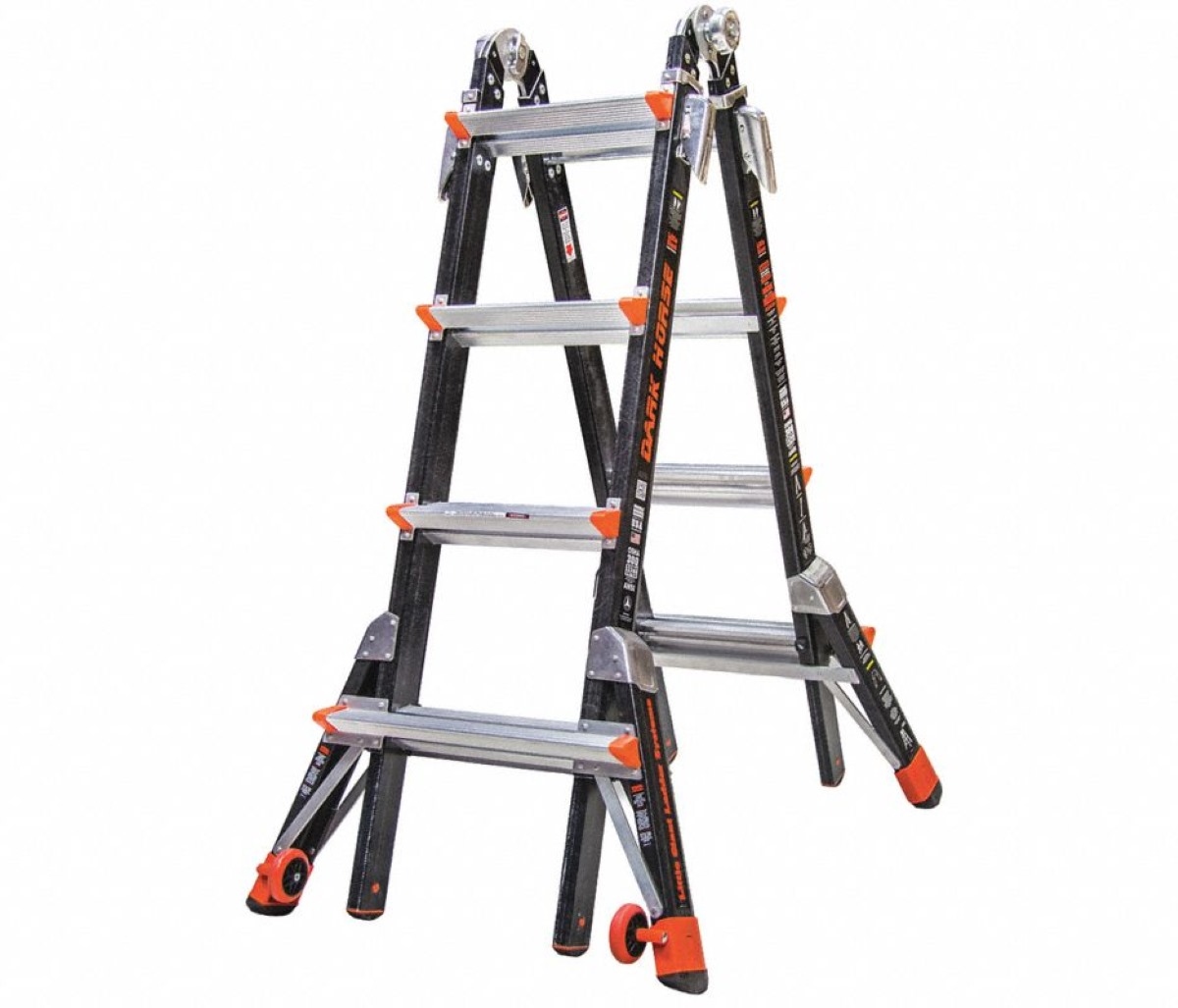





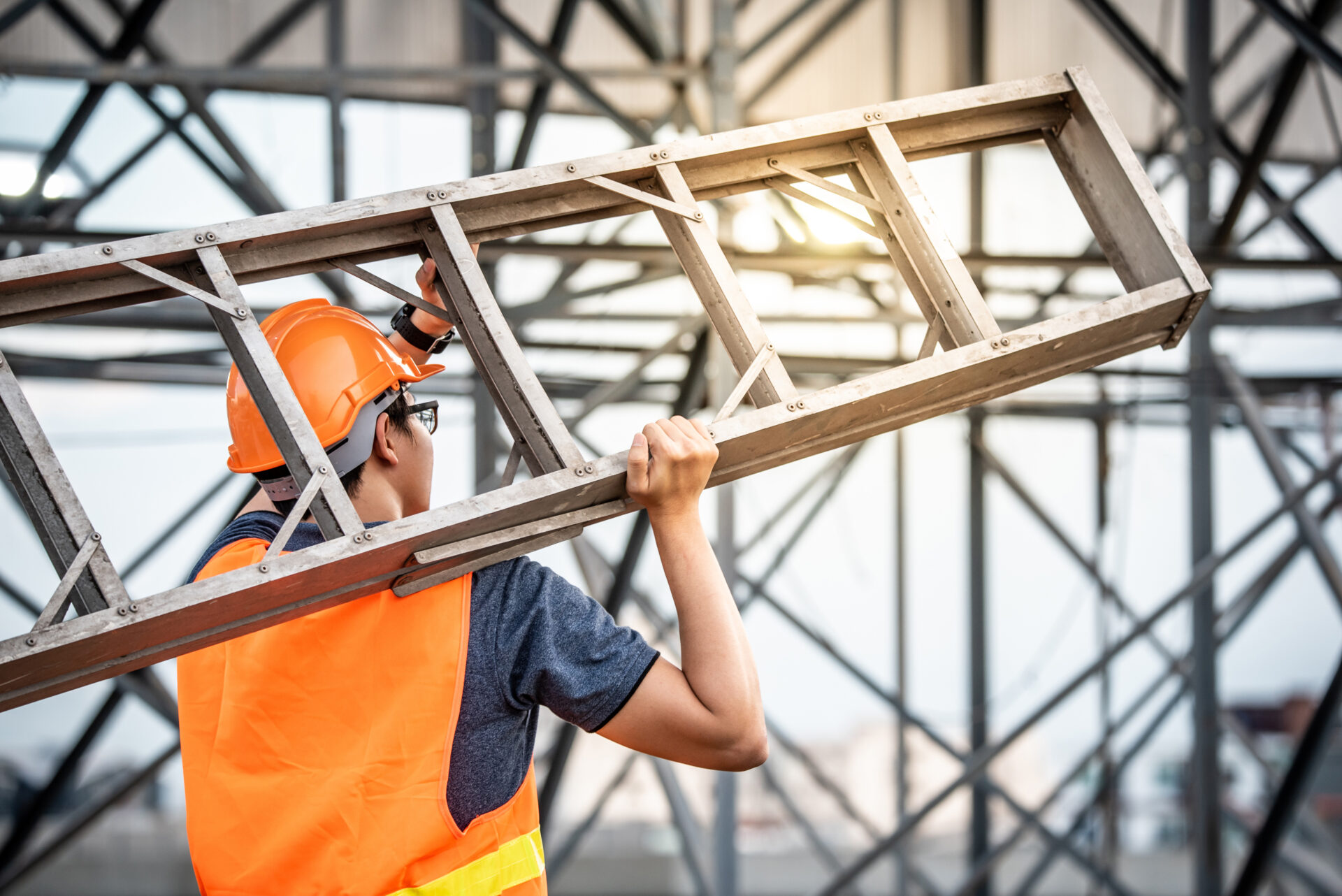
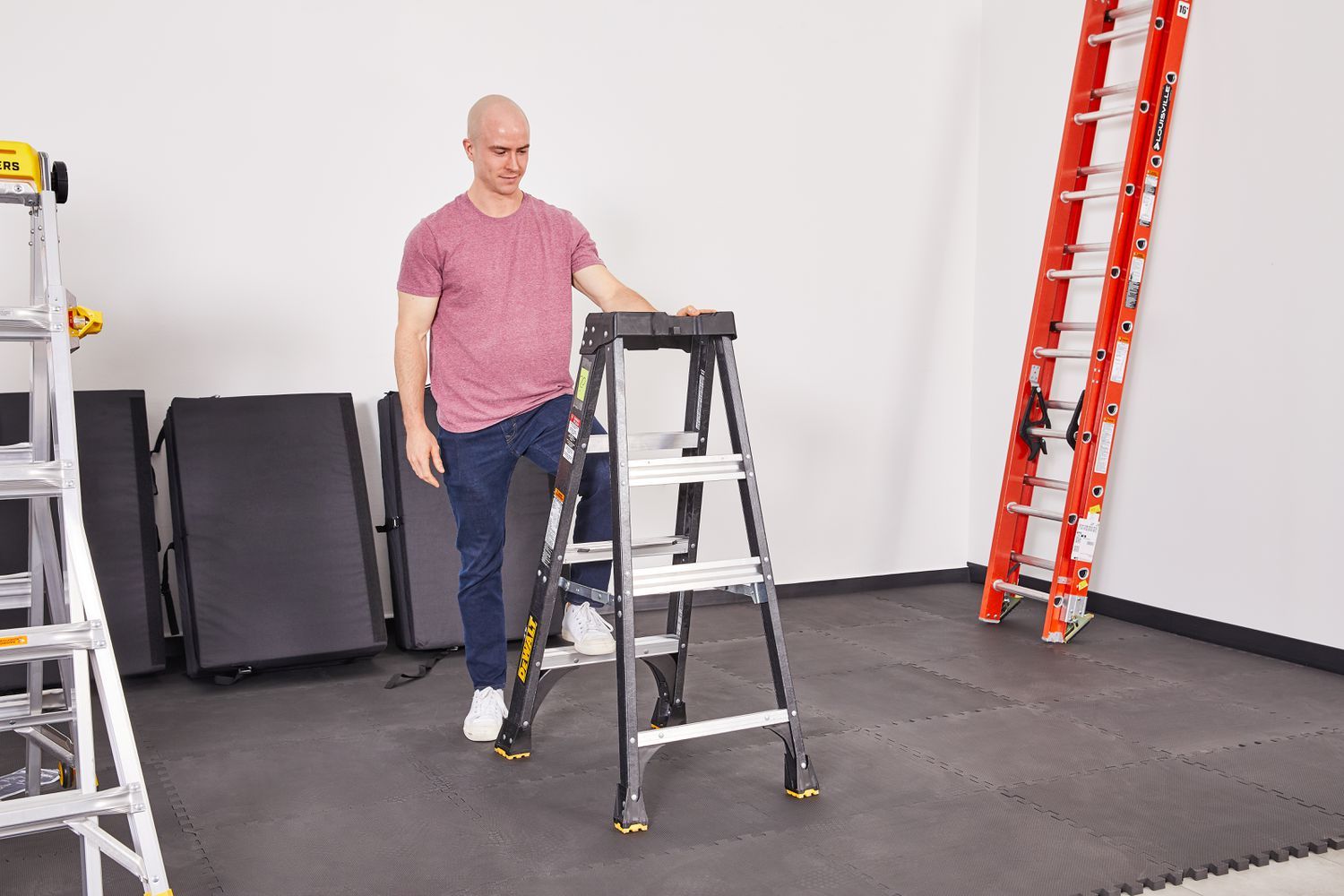
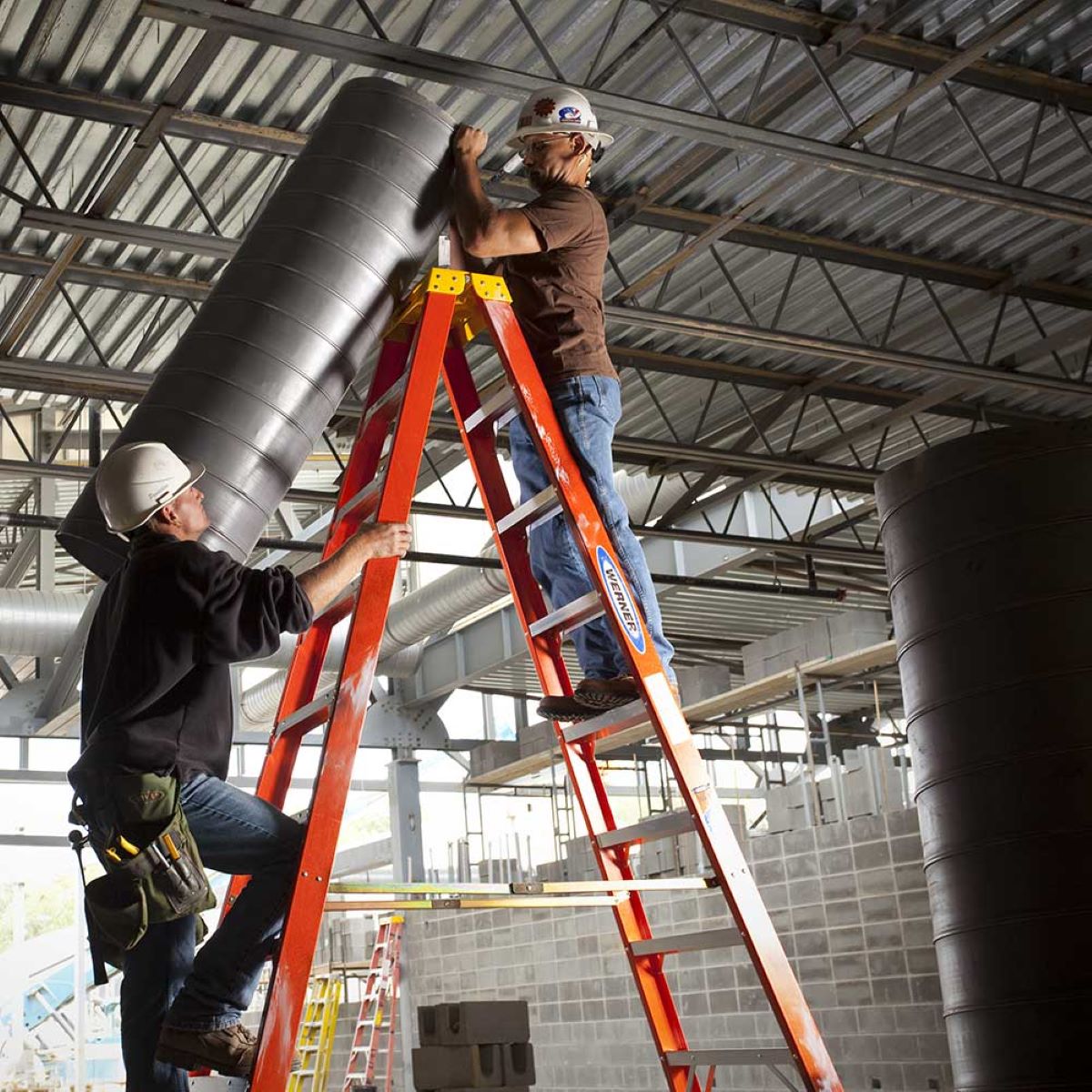

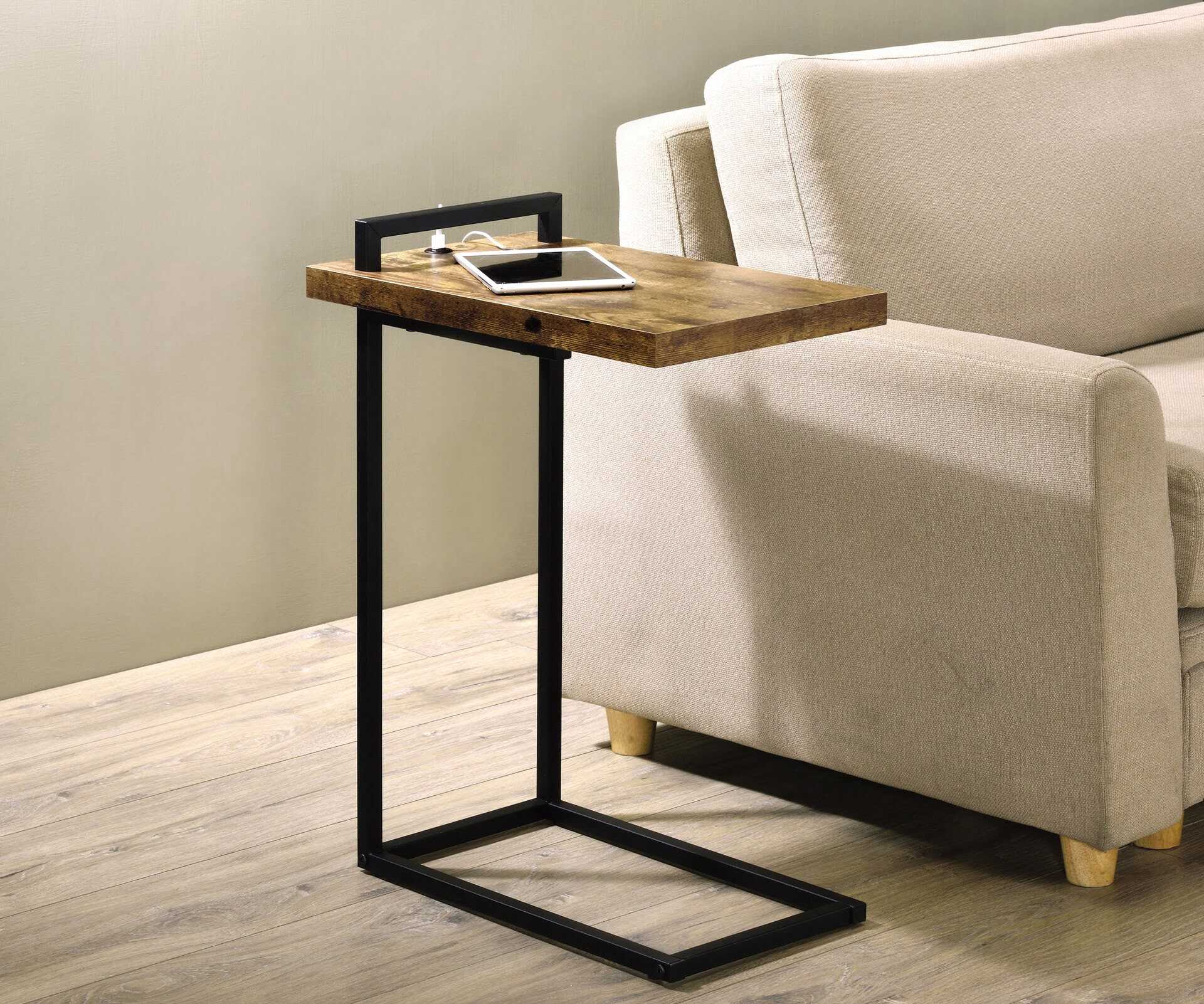

0 thoughts on “If You Must Set Your Ladder In Front Of A Door What Should You Do To Ensure Your Own Safety?”